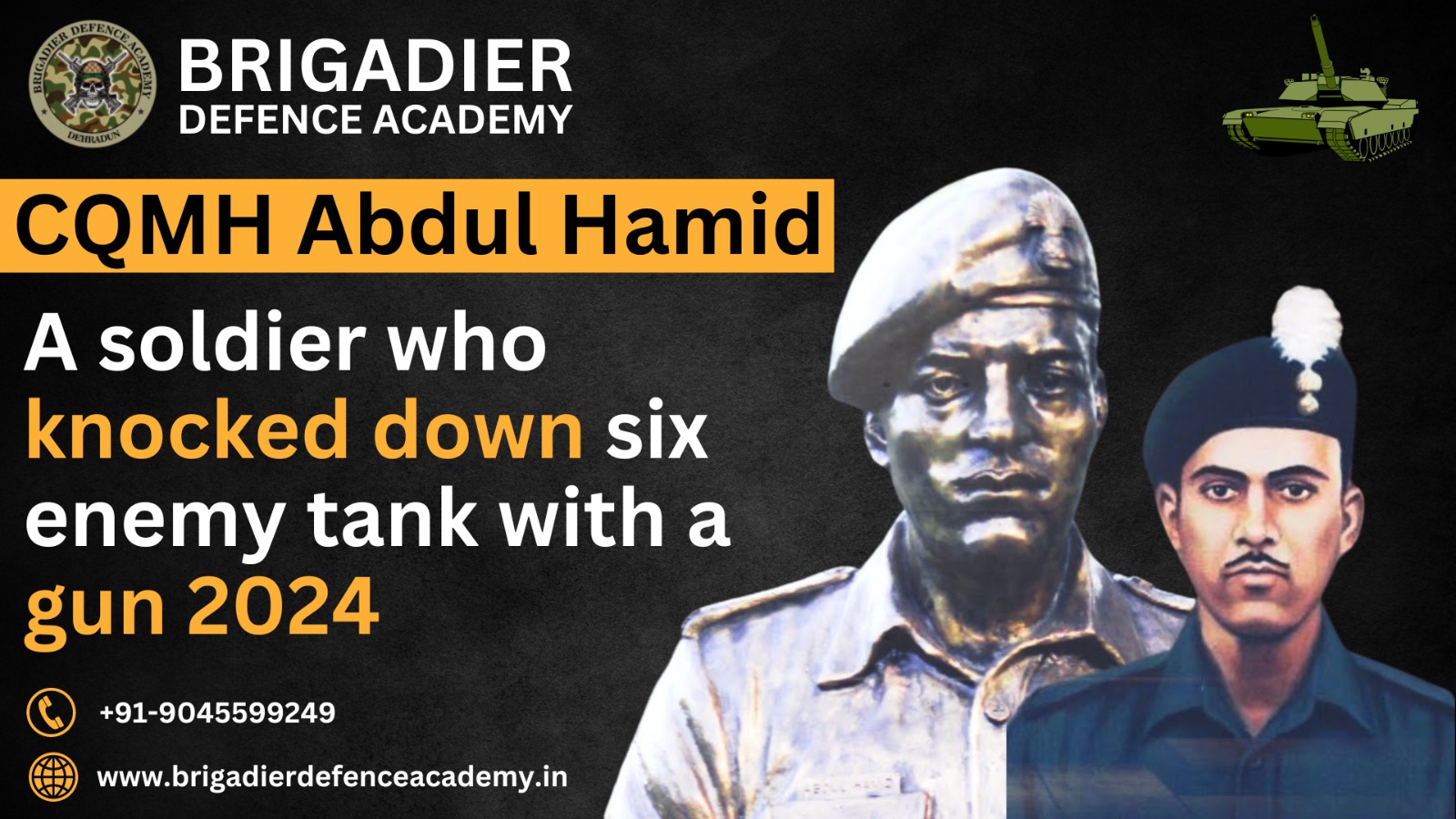Introduction of CQMH Abdul Hamid:
Courage, determination, and selflessness are qualities that define extraordinary individuals like Company Quarter Master Havildar Abdul Hamid. His remarkable act of valor on the battlefield during the 1965 Indo-Pak War continues to inspire generations and serves as a testament to the indomitable spirit of the Indian Army. In this detailed account, we delve into the life, military career, and heroic actions of CQMH Abdul Hamid, a true hero of India.
Early Life and Military Journey of CQMH Abdul Hamid:
Abdul Hamid was born on July 1, 1933, in Dhamupur village of Ghazipur district in Uttar Pradesh, India. Raised in a humble family, he imbibed the values of courage and integrity from an early age. Motivated by a deep sense of patriotism and a desire to serve the nation, Hamid joined the Grenadiers Regiment of the Indian Army in 1954.
Training and Deployment:
Hamid underwent rigorous training at the Grenadiers Regimental Center and emerged as a skilled and disciplined soldier. His dedication and proficiency earned him the rank of Company Quarter Master Havildar, a position that demands leadership, strategic acumen, and unwavering bravery.
Battle of Asal Uttar:
The defining moment in Abdul Hamid’s military career came during the Battle of Asal Uttar in the Indo-Pak War of 1965. As part of the 4th Grenadiers Battalion, Hamid was deployed near the Khem Karan sector in Punjab, where intense tank battles unfolded between Indian and Pakistani forces.
Act of Valor:
On September 10, 1965, Pakistani tanks launched a fierce offensive, aiming to break through Indian defenses. Despite being outnumbered and outgunned, Abdul Hamid displayed extraordinary courage and initiative. Armed with a recoilless gun mounted on a jeep, Hamid maneuvered skillfully, targeting and destroying enemy tanks with precision.
The Battle Unfolds:
Hamid’s strategic positioning and fearless engagement disrupted enemy advances, inflicting heavy losses on Pakistani armored units. His daring actions not only boosted the morale of Indian troops but also stunned the enemy forces with his audacity and marksmanship.
Single-Handed Bravery:
In a remarkable display of single-handed bravery, CQMH Abdul Hamid knocked down six enemy tanks before sacrificing his life in the line of duty. His gallant stand and supreme sacrifice turned the tide of the battle, earning him accolades and posthumously the Param Vir Chakra, India’s highest military decoration for valor.
Legacy and Inspiration:
CQMH Abdul Hamid’s legacy lives on as an epitome of bravery, selflessness, and unwavering commitment to duty. His exemplary courage under fire continues to inspire generations of soldiers and civilians alike, reminding us of the sacrifices made by our armed forces to safeguard the nation’s honor and integrity.
Conclusion:
In the annals of India’s military history, Abdul Hamid’s name shines brightly as a symbol of courage and sacrifice. His valorous actions during the Battle of Asal Uttar serve as a timeless reminder of the indomitable spirit that defines our armed forces. As we honor his memory, let us also reaffirm our gratitude to all the brave men and women who stand guard, ready to defend the nation at any cost.







